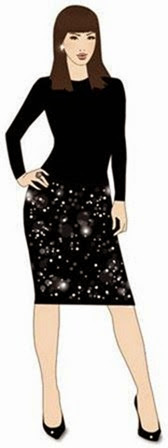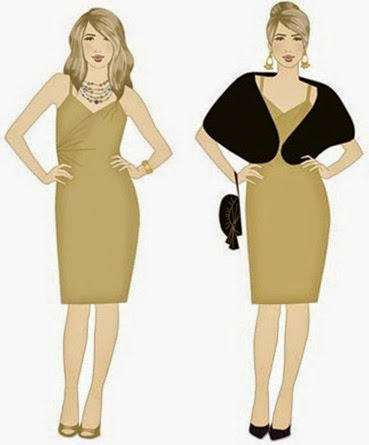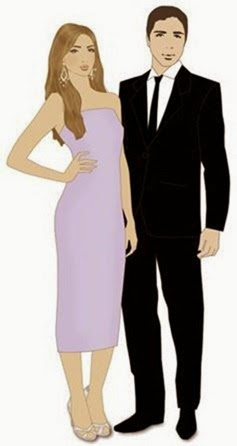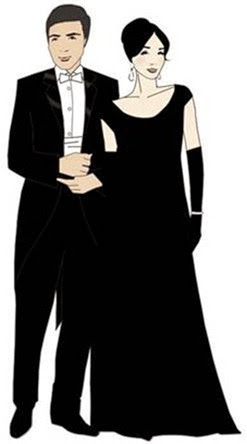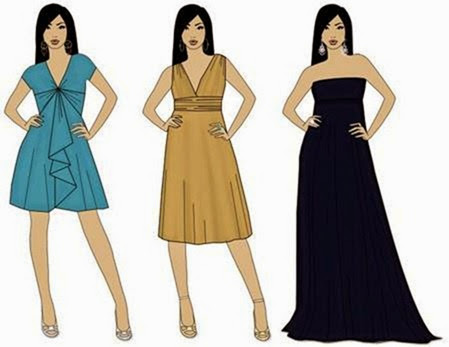Dressing to Flatter Your Body
In This Chapter
▶ Being realistic about your body type
▶ Accentuating the parts of your body you love and camouflaging the ones you don’t
▶ Flattering your figure no matter what your size
▶ Knowing when to have your clothing altered
just because an article of clothing is in style does not mean it belongs in your closet. I know, I know, sometimes you walk by the window of your favorite store, you see that perfect dress, and you say to yourself, “I have to have it!” Well, before you whip out your credit card or wallet, wait! Just because that dress looks fabulous on the mannequin does not mean it’ll look fabulous on you. If you try it on, and it looks nothing like what it looked like on the mannequin, put it down; do not buy it. If it’s not a 10 on you, it won’t be a 10 in your closet (see Chapter 2 for information on my 10 System).
How can you ensure that everything you choose is a 10? You need to pay attention to your size and body type. These are key factors in deciding what you can and can’t wear. I don’t mean to steer you away from trying to make the latest trends work for you. I just want you to figure out the best way to flatter your figure so you look and feel your best. This chapter tells you how.
Golden Rules and Good Advice for Finding Clothing that Compliments You
Every woman has something to complain about when she looks in the mirror. (If you don’t, good for you — you can move to Chapter 4!) But if you’re like most women, once you fix the one thing that bothers you, another seems to emerge. You lose weight; now it’s time for smoother skin. You get your teeth whitened; now it’s time for buffer-looking arms. The journey never ends. Why do so many of us feel the constant dissatisfaction? One theory is that the closer we get to “perfection,” the more annoying other imperfections feel! (Exhausting, isn’t it?)
With that said, we all have parts of our bodies that are great and parts that, well, just aren’t. You need to be honest with yourself, know what your strong features are, and then pick stylish items for your wardrobe that flatter those areas. The key is to find a style that compliments your shape, size, and stature. The following sections show you how.
I’m not saying that some items in your closet should highlight what works best on you. I’m saying all of them should. You should always be your sexiest self, whether in sweaters, sweats, or sizzling evening wear.
Whatever your shape, you may have noticed that some designers fit you better than others. Why? Because each designer uses a fit model as the standard for their sizing, and each fit model is different, which means that each designer’s garments fit differently. Because it costs more for manufacturers to provide a variety of fits for every garment, they just stick to the one base- line fit and size up and down from there. So if you find a particular brand that works for your body, see what else is in that designer’s line. Chances are good that many of the line’s items will also work for you.
Getting key measurements
Most women have a good idea what their measurements are, but rather than assume you know, get an accurate measurement. Going to a tailor will give you more accurate measurements, but you can certainly get a close approximation handling the measuring tape yourself. The measurements that you definitely need are your chest, waist, hips, and inseam. You may also want to add your thigh and upper arm measurements. Figure 3-1 shows where to place the tape to measure each of these areas.
When taking these measurements, use a cloth tape measure, not a metal one. Make sure that, when you circle your chest, waist, or hips, the tape is level and neither too tight nor too loose. Also measure yourself on your bare skin, not over clothes. And this may sound silly, but don’t trust your memory — be sure to write the measurements down!
✓ Chest: Measure the circumference of your chest. Place one end of the tape measure at the fullest part of your bust, wrap it around (under your armpits, around your shoulder blades, and back to the front) to get the measurement.
✓ Waist: Measure the circumference of your waist. Use the tape to circle your waist (sort of like a belt would) at your natural waistline, which is located above your belly button and below your rib cage. (If you bend to the side, the crease that forms is your natural waistline.) Don’t suck in your stomach,or you’ll get a false measurement. If you generally wear your clothes below your waist, take that measurement as well.
Figure 3-1: Measure yourself properly.
✓ Hips: Measure the circumference of your hips. Start at one hip and wrap the tape measure around your rear, around the other hip, and back to where you started. Make sure the tape is over the largest part of your buttocks. Because making sure the tape is level back there can be hard, try to do it in front of a mirror.
✓ Inseam: This is the distance from the uppermost inner part of your thigh to the bottom of your ankle. You can measure your inseam in two ways.
• With help: While you’re wearing a pair of pants, have a friend stretch the tape from your crotch to the bottom of your ankle.
• Without help: If you have a pair of pants that fit you perfectly (and they shouldn’t be too loose around the waist), measure the inseam of the pants, again from the crotch to the hem.
The proper inseam on a pair of pants you’re going to purchase will depend on the height of the heel you’ll be wearing with them.
✓ Thigh: Measure the circumference of the fullest part of your thigh. Wrap the tape measure around your thigh from front to back and then around to the front. You may be tempted to cheat by lowering the tape measure a few inches but then you won’t get an accurate measurement.
✓ Upper arm: Measure the circumference of your arm. Wrap the tape measure around the widest part of your upper arm from front to back and around to the start point.
✓ Sleeve length: Get help for this one because it’s hard to do yourself. Place your hand at your waist (your elbow should be bent at a 90-degree angle).
Then start at the middle of the back of your neck and measure to your shoulder, down your arm to the elbow, and then on to the wrist.
You may need a family member or friend to assist you with the measurements. If you have a garment that fits perfectly, measuring the garment rather than your body can be a good substitute.
The fruit basket: Determining your shape
What is the ideal shape today? I bet you’re saying, “It depends on who you ask.” If you look at many fashion magazines, you’ll likely see the ideal as tall and thin. If you ask the average male, he may say a woman who is “curvaceous.” And if you ask yourself? Hmmm, that may take a little while to answer. But here’s the deal: In order to begin to build a wardrobe that expresses your personal style, you must determine what your shape is.
Okay, don’t roll your eyes, but yes, I’m asking you to assess your body and then compare yourself to a piece of fruit. You’ve probably heard these terms before, but perhaps this is the first time you’ll actually identify yourself with food that usually works as a centerpiece on your kitchen table.
The shape of many women can be described as bearing a similarity to either a pear or an apple. Now, take a look in the mirror and decide which of these you resemble most. If you’re a pear, you tend to carry your weight around your hip and bottom area, and if you’re an apple, you tend to carry your weight in your upper body.
Once you know your shape, your next job is to figure out how to use fashion to accentuate the parts you love and help hide the parts you don’t. By dis- covering how to draw attention away from problem areas, you then have the general knowledge you need to dress in the most flattering way for your body type, no matter the occasion.
Whether you’re a pear or apple does not mean you’re overweight. Apples simply carry their weight in their upper bodies, and pears tend to carry their weight around their hips and bottoms. The trick is to use your clothing to make your figure more proportioned on top and bottom. What if you don’t fall into either category (some women are cut pretty straight up and down; others are fairly proportional)? Fortunately, you don’t have to be either one or the other to make this information work for you. No matter your shape, you can use the advice I give in the following sections to make the most of your clothing! Plus, you have more leeway with what looks good.
The most common fruit: The pear
The most common shape for women is the pear shape (see Figure 3-2). What that means is that the widest part of your body is below your waist, around your hips. Remember, you can be tall, short, heavy, or skinny and still be pear-shaped. If you’re a pear, your fashion goal is to elongate your figure so that you look less bottom-heavy. The first line of attack to reaching this goal is to balance your hips and your shoulders while showing off your curves. The key here is to accentuate your top half. For example, if the eye is drawn to your cute top or the scarf around your neck, it takes the focus off your bottom half.
Always wear something darker and slimming on the bottom, like dark jeans or slacks, or a dark knee-length pencil skirt or A-line skirt. And, no, that doesn’t mean that you always have to wear black on the bottom, but make sure that the bottom is solid in color and darker than whatever you have on top.
As a pear, you want to direct attention to your tops. Fun colors, prints, or details at the neck all serve the purpose of drawing the eye away from the hip area. Just make sure that your tops don’t end at your hips because that draws unnecessary attention there. Figure 3-3 shows how combining a tailored, flared pant with an attractive, eye-catching top can play up a pear’s best features.
Read on for even more pear-pleasing suggestions:
✓ Go for clean, tailored lines on the bottom. Whatever you wear on the bottom should always be more tailored, such as flat front pants. With skirts, the A-line or flared skirt is a great piece to use as a base to accentuate a beautiful selection of tops. Stay away from pleats, side pockets, or anything that is going to add dimension to this area.
If you wear a belt, make sure it’s slim and the same color as your pants (a wide belt draws more attention to the area you’re trying to deemphasize). If you belt a dress, make sure the belt sits higher up at your waistline rather than your hips. Better yet, wear a top that’s gathered around the stomach. Doing so hides your tummy if you need to, while creating dimension someplace other than your hips.
Figure 3-3: The perfect outfit for a pear.
✓ Wear pants or jeans that have a flare on the bottom. A flared leg draws the eye away from your hips and creates a more flattering line for your whole body. Conversely, stay away from capri or tapered pants. They drive the eye right to the hips.
✓ Check out tunic tops or dresses. You can wear a tunic top or dress as long as it fits properly. (Don’t wear a tunic top or dress if it’s in any way clinging to your belly or your hips.) One that fits properly gives a clean, elongating line while camouflaging everything underneath. The great thing about this style is that it accentuates your arms and your whole upper body and makes you appear taller and leaner at the same time.
✓ Make use of jackets. Jackets are great for pear-shaped people because they usually have interesting details around the neckline and give more structure to the shoulder area, where you’re trying to direct the focus. When wearing a jacket, choose one that ends past your hips, not at them. A longer jacket, such as a cute blazer, creates a long, lean line and covers the hip area.
✓ Experiment with different necklines. A deeper, more plunging neckline elongates your upper body and draws all the attention upward. Try wearing a long necklace to fill in the neckline, which also adds to the lengthening of your upper body.
✓ Show off your shoulders. The shoulders are a great and sexy part of a woman’s body. Especially if you’re pear-shaped, you want to show them off by wearing off-the-shoulder tops that expose one or both shoulders. These tops immediately attract attention and steer the eye exactly where you want it. Ruffles or puffy sleeves on your top are also great for pears.
When you keep it simple on the bottom, you have so much room to play with tops and accessories. You can start to stock your wardrobe with great fitting pants, jeans, and skirts, and then play with colors, prints, and less expensive, trendier items on top. Try a fun scarf around your neck, a fabulous necklace, or a great pair of earrings. These items all serve to draw the eye up to your best feature — your face!
Choose materials that hold their form like wool slacks or denim. They flatter and streamline your shape. Avoid any tight knits on the bottom because they cling and accentuate your width.
The next most popular fruit: The apple
Apple-shaped women (see Figure 3-4) are fuller around the middle. If they gain weight, it shows up around their belly and upper body. They’re usually larger-breasted and their upper arms and shoulders are broader, too. Their legs tend to be thin and their butts tend to be flat.
As an apple, you want to emphasize your strong points (your bust and legs) while camouflaging your weaker ones (your midsection), keeping it all in balance. Since the idea is to draw the eye toward those parts of your body that shine and away from those that don’t, you want to show off your great legs.
✓ You can wear patterns, just follow these guidelines. Any large pattern is going to draw attention, so don’t wear a large pattern on top. Wear a small, subtle pattern on top, or save the patterns for the bottom. A great print skirt with a solid sweater set is a great way to express yourself while also flattering your figure.
✓ If you have a fuller chest area (and are comfortable accentuating this area), draw attention to it. Doing so keeps straying eyes from your midsection. Wear a sexy V-neck. (Ooh la la!)
Wear bras that support your bust. And any straps on your tops should be wide enough to cover your bra straps. (See Chapter 14 to find out more about the different types of bras.)
✓ If, like most apples, you have great legs, short skirts are in order. If you’re in the office, the shortest your skirt should be is just above the knee. If you’re going out for a night on the town, go a little higher!
✓ A-line skirts also work with your figure. Since they flare out from the waist, A-line skirts offer balance and proportion to your upper half.
✓ If you don’t have much of a backside, and you want to give the illusion that you do, wear pants with back pockets. Your jeans should have a rise lower than your natural, wider waist. Don’t wear pants with pleated fronts, as that only makes your middle look larger.
Don’t wear pants that are too tight, even if you have good legs, because that makes your top seem extra large. Remember, while you want to emphasize your better attributes, the challenge is to do so while also keeping your overall look in balance.
✓ Go for longer jackets. Your jackets should be on the long side, never ending at waist level. Make sure they come down to your hips to create a long, lean line right over your waist and tummy area. And opt for single- breasted jackets that you can keep unbuttoned. A double-breasted blazer that needs to be buttoned to look right only makes you look larger on top.
✓ Opt for drop waists. A dress or top with a drop waist (that narrows down at the point of your hips instead of your true waist) bypasses any constricting fabric around the tummy area and makes your torso appear longer and leaner overall.
Figure 3-5 shows an outfit appropriate for an apple-shaped woman. It hides the problem areas and accentuates the positive features.
If you’re an apple with great legs, you can get away with anything on the bottom, even knits. As far as your top goes, stay with materials that offer more structure, like a straight cut cotton blouse, or something blousy like silk. Both of these camouflage the midsection. You want to avoid tight knits on top because they cling and accentuate this area.
Where’s your waistline?
Another common attribute of women is to be either short-waisted or long-waisted. To deter- mine your own “waistedness,” follow these simple steps:
1. Measure the distance between your armpit and your waist.
2. Measure the distance between your waist and the bottom of your bum.
Figure 3-5: An A-line skirt is a great cut for an apple-shaped woman.
3. Compare the measurements.
If the two aren’t equal, you’re either short- or long-waisted: If the first measurement is shorter, you’re short-waisted. If the second measurement is shorter, you’re long-waisted (see Figure 3-6).
Short-waisted women
Maintaining balance is one important key to flattering your figure and dress- ing for your body type. If you’re short-waisted, you’re going to look out of balance with a top half that appears smaller than your bottom half. Finding ways to make your top half look proportionate to your bottom half, by making your waist appear longer, helps you achieve balance.
✓ Try a top with vertical lines. These lines give the illusion that your top half is longer than it is. The stripes can be as subtle as a pinstripe blouse — anything that keeps the eye moving up and down right over your waist works.
✓ Wear tops that you can leave untucked. This is another way of hiding where your waist actually is.
A deep V-neck draws the focus upwards and away from your waist (this is a little tip that works for everyone — not just short-waisted women).
✓ Avoid dresses with a waistband. If you do need a belt, choose a narrow one that’s in the same color as your outfit to minimize the attention to the waist area.
✓ If you wear prints, limit it to your top and make sure your top ends by your hips. This hides your true waistline, and the break between the pattern and the solid bottom make your waist seem longer than it really is.
What you don’t want to do is draw attention directly to your middle, as the left-hand model in Figure 3-7 does. The wide belt at the waist accentuates the short waist, making the top half look out of proportion with the bottom half. The tunic top, on the other hand (also in Figure 3-7), elongates the waistline and makes the body look balanced.
Figure 3-7: A don’t (left) and a do (right) for short-waisted women.
Long-waisted women
The problem that long-waisted women have is that their body type makes their legs seem shorter. If you’re a long-waisted woman, you need to use your clothes to add length to your bottom half:
✓ Choose dresses that have an A-line or an empire waist. These styles make your waist appear higher than it is, thus making your legs appear longer too.
✓ Choose shirts that cover your waist. The short, stomach-baring shirts are a problem for long-waisted women. When these types of shirts were the trend, it became difficult for long-waisted women to find tops that didn’t look like they’d shrunk in the dryer. (By the way, anyone over the age of 12 should avoid this trend at all costs. No adult women should ever wear stomach-bearing tops. And, no, it doesn’t matter if you spend every day at the gym!)
✓ Choose pants that are at your natural waistline or a bit above. You definitely want to avoid hip huggers because they make your legs look even shorter.
Never feel as though you’re not “in” if you aren’t wearing what are supposedly the current trends. Even the fashion industry makes mistakes. You don’t have to follow its lead! As I’ve mentioned before, don’t let a trend dictate what you wear. Not all trends work with all body types, and you don’t want to be a fashion victim. Better to stick with your own style and wear clothes that flatter you.
✓ Opt for short jackets. The bolero style, for example, can be very elegant on a long-waisted woman.
✓ Wear heels. They add length to your legs.
✓ To heighten the effect of longer legs, make sure your shoes match your bottom. If you’re wearing a skirt or dress, matching hosiery also adds to that effect, as does a wide belt that matches the color of your bottom.
Whatever you do, avoid styles and cuts that make your legs look shorter (see Figure 3-8). Low-waisted jeans with a shorter top only accentuate your long waist, cut you in the middle, and make your legs look shorter. High-waisted pants, on the other hand, will elongate your legs, and raise the appearance of your natural waistline (also in Figure 3-8).
Figure 3-8: A don’t (left) and a do (right) for long-waisted women.
Tackling other problem areas
The preceding sections concentrate on the waist and hips because those are the most common problem areas, but there are others as well:
✓ Full arms: If your arms are very full, try wearing tops that extend the shoulder, such as a drop shoulder. Adding a colorful shawl in cooler months can also work well. And, of course, tops with lots of fabric in the sleeve can also disguise what’s underneath.
✓ Long necks: If you don’t like your neck because you feel it’s too long, use scarves, turtle necks, cowls, or high collars to make it appear less elongated.
✓ Short necks: For a short neck, you want to expand the neck area by making it seem that the area just below the neck appears to be a part of it. For that, keep your neckline open by unbuttoning a top button or wearing V-necks.
✓ Too-large or too-small chest: If you want to make your chest area seem smaller than it is, a fuller top deemphasizes what’s underneath. You can also wear darker, solid tops with a higher neckline. These minimize the look of the bust area and make it appear smaller. If you have small breasts and want them to appear larger, try wearing tops in lighter colors or with prints. These draw attention to your bust and also make it appear bigger, as do V-necks, sweetheart necks, or any neckline that shows off the bust area. And a very colorful scarf tied in a knot at chest level draws the eye there and accentuates the bust as well.
Remember these two general principles: Cover problem areas with some creative fashion sense, and highlight the other parts of your body that you find attractive to draw the eye there.
Getting Your Size Right
Clothing is available for all body types. Whether you’re buying pieces from the general misses collections, the petites department, or the plus-size department, make sure your clothing fits you properly.
Clothing sizes are never exact because no two people have the exact same measurements. In many instances, the compromises that you have to make to wear “your” size are not that noticeable. Other times, you really must have your clothing altered to get the right fit. If you can find a manufacturer whose size is really close to yours, buy whatever you need and like from that designer’s line.
Petites
Regular misses clothing is designed to fit a woman who is 5 feet 5 inches. If you’re significantly shorter than that, even if some measurements like your waist or bust match a particular regular size, many others like sleeve length or inseam won’t. So women on the shorter side need to shop in the petite section in order to get the best fit.
As you’d expect, if you’re shorter than average, your goal for your wardrobe is to make yourself seem as long as possible. So petites should wear clothes that don’t cut them off in the middle but rather offer the eye the longest possible line.
✓ Clothing that offers vertical lines such as stripes or is monochromatic (or has colors in the same family) are your best bet. If you wear patterns, make sure that they’re smaller (larger patterns can overwhelm you). Stay away from opposites, such as a stark white shirt and black pants. These color combos cut you in the middle. If you want to wear contrasting colors, make sure that the overall look remains vertical so you maintain a longer appearance. For example, go ahead and wear a red blouse with a charcoal gray skirt, but make sure that you also have a matching charcoal jacket.
✓ As a petite, you want to avoid horizontal lines. Wide belts or sashes shouldn’t be a part of your wardrobe, unless they’re the identical color of your outfit.
✓ Detailing can also be useful. A long skirt with a line of buttons down the side adds length to the eye. A wrap dress with an edge that stands out, for example one made of satin, offers a long diagonal line, which has much the same effect as a vertical line.
✓ Need I mention heels? Shoes are most women’s favorite accessory, not to mention biggest weak spot when shopping! Women always make an excuse to buy more shoes. Well, petite women, as long as you can walk in them, break out the high heels! They’ll give you a couple extra inches and, in most cases, give your confidence a boost, too.
Figure 3-9: A pinstripe top is a good choice for a petite woman.
Figure 3-9 shows an outfit that makes a petite woman look taller because of the pinstripes and because the color scheme is the same from top to bottom.
The taller woman
Many tall women likely didn’t love their height growing up. (It’s never easy being the tallest girl in the class!) But get older and being tall is likely easier. Now it’s just about finding clothing that flatters your long body!
Unless you’re over 6 feet tall or have some real figure flaws that you’re trying to hide (refer to the earlier section “The fruit basket: Determining your shape”), you’ll have an easy time shopping and finding clothing that works and looks great on your body. Most models and fit models (models designers use to size their clothing) are on the taller side, and so most designers cut according to those models.
The Baby Phat line of clothing is designed by Kimora Lee Simmons who is 6 feet tall, and tall women report that she has adapted her line to suit taller women, so you may want to check out her clothing line. You can find Baby Phat designs at Macy’s as well as online at www.babyphat.com.
If, for some reason, you’re uncomfortable with your height and want to draw attention away from it, your goal should be to differentiate your top half from the bottom to keep the eyes from seeing you as one long, lean line. To accomplish this, you can use horizontal stripes or a wide belt. Both keep eyes from looking you up and down. Another way to accomplish this is to wear different colors on your top and bottom halves. Black and white does this well, as do any two contrasting colors. A taller woman can also use larger accessories, like a large bag and chunky jewelry. If your accessories are eye-catching and/or in bright colors, they attract all the attention. Figure 3-10 demonstrates how you can wear a contrasting black belt to cut the body in half and make it appear shorter.
If you’re really trying to appear shorter, flat shoes (obviously) help. Tons of cute flats are out there these days, from boots to ballet flats to sandals to flip-flops. The variety is endless and a very welcome addition to most tall women’s wardrobes!
Figure 3-10: Tall women look great in contrasting colors and flats.
Plus sizes
If a size 14 in misses clothing is too small for you, you fall into the plus-size category. You’ll have a larger variety to choose from and a much easier time finding clothing that fits properly and works on your body type if you shop in the plus-size department.
As a plus-size woman, you’re still a fruit (lucky you!) and need to follow the rules that fit your body shape (head to the earlier section “The fruit basket: Determining your shape” to get the appropriate tips).
In addition to the fruit tips, as a plus-size woman, you’re going to look better in solids or small patterns because with so much extra material, any larger pattern is going to make too strong an impact. If you wear plus sizes, a monochromatic look will help elongate your appearance, as Figure 3-11 shows. Of course, while muted colors are going to blend in more, don’t be afraid of color. If the clothing fits right, is flattering, and accentuates your better attributes, go for it. Bright accessories and statement jewelry are also a great way to make any basic outfit pop.
Since a little added height also makes you look more proportioned, wearing heels is a good idea, especially when you dress up. If you’re showing your legs and wearing hosiery, don’t wear hose with patterns or bright colors, how- ever, because that makes your legs look larger. Better to stick with dark tights or flesh-colored hose.
Depending on your exact shape, low-rise pants may be good for you because they don’t squeeze you around the middle (assuming that’s your widest part). You want to avoid wide belts because they draw the eye to your waist. When you wear a belt, choose one that matches the color of your top or bottom. Doing so deemphasizes your waistline.
Figure 3-11: A monochromatic look.
If you haven’t done so already, try out Spanx (head to Chapter 14 for these and other undergarments). Spanx are made to hold you in basically wherever you need a little help! They should become your best friend whether you’re a size 2 or 20!
If you’re plus-size and constantly choose loose dresses because you think they hide what you’re insecure about underneath, stop! Loose dresses with an abundance of material make you look even bigger (see Figure 3-12). They also make you look like you don’t have any shape at all and do nothing to accentuate the attributes you should be showing off.
Just because you’re plus-size doesn’t mean you need to be wearing mu-mus. Make an effort to find clothing that flatters your body. Every woman has beautiful parts and those should be accentuated, not hidden under a tent. Along those same lines, be careful that your clothing is not too tight. Avoid materials that cling to your body, like spandex.
Evens and Odds: Understanding Clothes Sizing
In most settings, two is twice as big as one, but not in women’s clothing. In the past, most women either made their own clothes or had them custom-made, so there was no need for standardized sizes. But once most women started buying their clothes ready-made, a system of standardization was required. In the early 1950s, the National Bureau of Standards, a government agency, was called in to study the situation. An Acting Secretary of the Subcommittee on Body Measurements for Wearing Apparel Sizes was appointed and various engineers and mathematicians were brought on board. After three years of hard work, the standards were set.
Figure 3-12: Don’t choose anything that resembles a mu-mu.
The operative word in the preceding sentence is “were.” Even though the federal government spent three years working to figure out standard sizes for clothing, this relatively easy-to-understand system didn’t last long because women started to grow larger. In order to please women who didn’t want to have to say they were buying sizes that were at the higher end of the scale, the fashion industry introduced vanity sizing, which effectively moved every size down by four notches, so what was once a size 10 became a size 6. In 1983, the government threw up its hands and got out of the sizing business altogether, and so sizes today are a bit of a free-for-all. Because the government doesn’t dictate standard sizes anymore, you can’t always be confident that what a label reads on one garment will be at all similar to another. In other words, a size 8 made by one manufacturer does not necessarily fit the same way a size 8 from another manufacturer does.
Today the only vestige of the old standard sizes can be found in patterns, which have steadfastly retained the old sizing formula.
Nowadays clothing manufacturers have developed their own systems and the result can be a bit confusing. Consider these examples:
✓ Junior clothing includes only odd numbers, 0–13. The fit is more youthful, which generally means smaller and younger in style. If you’re past your teenage years, you should generally not be buying junior clothing. It most likely won’t fit properly and is not really age appropriate.
✓ Women’s clothing (often called “misses”) runs from sizes 0 to 14, even numbers only. These sizes are for most women, unless you’re petite, plus-size, or still young enough to wear junior sizes. These garments are cut with the assumption that women have fuller figures, taking into account the bust and hips.
✓ Plus-size clothing in most clothing lines is anything above a size 14. However, there have been recent changes made with women’s or misses clothing. Now you can find some misses clothing up to a size 20. A true plus size will be designated, say, 18W. The difference is that the plus size is cut larger in the bust and middle.
So what does all this mean to you? If you understand that the size indication on a garment is only a rough guideline, you’ll be much more careful to try on every item you buy before you make the purchase so that you won’t have drawers filled with clothing that doesn’t fit properly.
The Beauty of Altering
Just because you’re a size 6 and the label on the dress in your hand says “Size 6” doesn’t mean that dress is going to fit you. Instead of getting frustrated by this, find yourself an expert tailor. Yes, it’s going to force you to spend some of the money you normally would on buying clothes on getting the ones you have fixed, but you’ll end up with a wardrobe filled with clothes that fit you like a glove. Believe me, you can do more with a closet full of clothing made up of all 10s than you could with a lot of 5s laying around.
Here’s the situation with getting things altered: Do it when it makes sense. If you find the perfect dress in a size 14 but are yourself a size 2, you shouldn’t take the dress to the tailor to make it fit. But if you find a perfect dress that just needs to be a little shorter, or the waist needs to be taken in, or the arms are too long, the tailor should be your next stop.
A great fit is nearly priceless. So if the clothing is really worth it — it looks great and makes you feel great — invest the money to have it tailored properly. If it doesn’t fit properly, you can bet it’s not a 10 (refer to Chapter 2), and it shouldn’t be in your closet, let alone on your body!
Finding someone schooled in the art of altering clothes can be difficult. Here are some suggestions:
✓ Department stores often have tailors on the spot who can measure you and do the necessary work. If this is an option, grab it. The department stores know the tailors’ work well and use them time and again. You’re pretty much guaranteed quality workmanship.
✓ Dry cleaners are often a good source, either because they have a tailor in house or know of someone. If you need something like a simple hem, the dry cleaner is a safe bet. If the alteration is more complicated, con- sider an alteration shop.
✓ Alteration shops specialize in alterations and should be able to do what you require.
A referral from someone who has used a good tailor is always your best bet. The last thing you want is to experiment with a new tailor if you have a complicated alteration or the garment was very expensive. You may want to have two people, one who is less expensive and you can trust to do little jobs (like the hem on a pair of pants) and another who specializes in dressy dresses and more complicated items.
Not so long ago, most women could sew a simple hem. (I can’t, so don’t feel badly if you can’t either.) That was because pants only came in one long length and so they all had to be hemmed to the proper length. Then manufacturers started selling pants, especially jeans, in a multiple of inseam lengths and the concept of having clothes altered started to fade, especially as sewing machines became less and less common a household appliance. (If you don’t own a sewing machine or are laughing at the notion of it, you’re not the only one!)


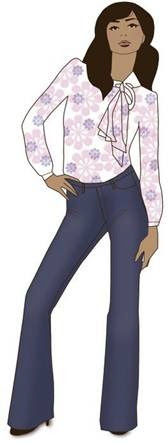
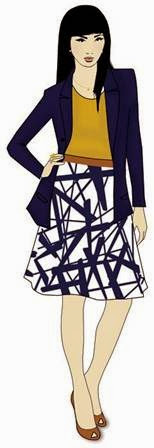





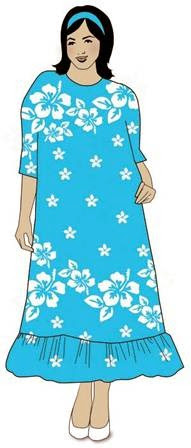
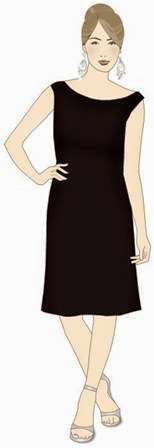

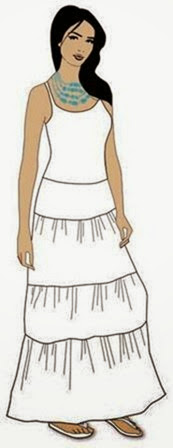


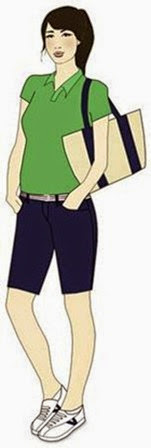




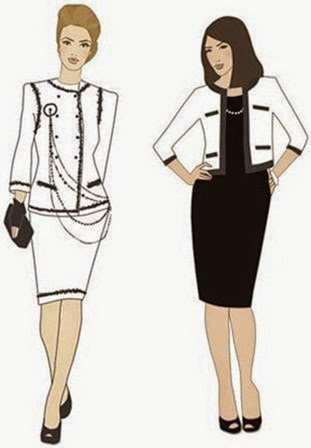
![clip_image009[1] clip_image009[1]](http://lh3.ggpht.com/-zbZo5dYNCNE/VKGhTt7P9qI/AAAAAAAA-cg/TPOIOv3yLUk/clip_image0091_thumb.jpg?imgmax=800)
![clip_image019[1] clip_image019[1]](http://lh3.ggpht.com/-SO9tnTFopno/VKGhXvqTfxI/AAAAAAAA-dA/nKKoggd0EWs/clip_image0191_thumb.jpg?imgmax=800)
![clip_image023[1] clip_image023[1]](http://lh4.ggpht.com/-q_Vz2Ws6Mhg/VKGhb_0LgHI/AAAAAAAA-dY/nqNJMN81WWI/clip_image0231_thumb.jpg?imgmax=800)
![clip_image021[1] clip_image021[1]](http://lh5.ggpht.com/-esKKGXtrhGQ/VKGhfsiNFjI/AAAAAAAA-dw/5oVm9S_BLb0/clip_image0211_thumb1.jpg?imgmax=800)
![clip_image025[1] clip_image025[1]](http://lh4.ggpht.com/-Zp8rL7Lr1FU/VKGhlwF_uEI/AAAAAAAA-eQ/LXCgKQqLPWw/clip_image0251_thumb.jpg?imgmax=800)
![clip_image029[1] clip_image029[1]](http://lh5.ggpht.com/-BxJFhKR7joo/VKGhpR5GdfI/AAAAAAAA-eo/jzyWmV0Dsmw/clip_image0291_thumb1.jpg?imgmax=800)
![clip_image034[1] clip_image034[1]](http://lh5.ggpht.com/-zmJEyjigPG4/VKGhvDW7jtI/AAAAAAAA-e4/gnuxz19NVN4/clip_image0341_thumb.jpg?imgmax=800)
![clip_image036[1] clip_image036[1]](http://lh4.ggpht.com/-huC-CD38Ycw/VKGhzSqZ_PI/AAAAAAAA-fI/33SjiWTAGxg/clip_image0361_thumb1.jpg?imgmax=800)
![clip_image040[1] clip_image040[1]](http://lh6.ggpht.com/-up87xh8VLl0/VKGh2j4ivLI/AAAAAAAA-fY/b3u62ITO6js/clip_image0401_thumb2.jpg?imgmax=800)
![clip_image042[1] clip_image042[1]](http://lh5.ggpht.com/-5-voh8igoeM/VKGh7aXaNJI/AAAAAAAA-fo/GPY5sS5PBKA/clip_image0421_thumb1.jpg?imgmax=800)

